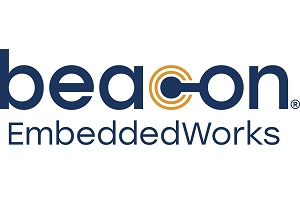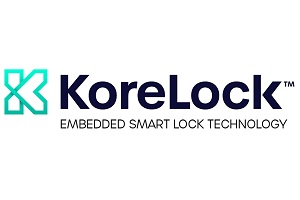
Digi International, a global provider of Internet of Things (IoT) solutions, connectivity products, and services, has launched Digi Containers, a software service that enables the development and operation of custom applications on Digi cellular routers that run DAL OS. Digi Containers leverage the Digi Remote Manager platform as the central portal for deploying and managing these applications.
The Digi Containers service helps developers take the fullest advantage of edge computing by providing the flexibility to deploy new services and apps while consolidating edge-processing hubs. These edge applications offer low latency and near-real-time responsiveness with the agility to respond to evolving use cases.
Through Digi Containers, developers employ Lightweight Linux Containers (LXCs) essentially virtual machines (VMs) that share the physical device’s running kernel. This enables processes inside a container to run at native speed as if they are actually running directly on the host device. Since containers are lightweight and portable, they offer both security and flexibility. This enables developers to expand on the capabilities of Digi solutions to support specific needs.
As a value-added service for Digi cellular routers, Digi Containers enable users to upload, manage, deploy, and monitor container-based applications through Digi Remote Manager. This empowers companies to orchestrate and manage a complex series of containers in various structures and configurations. Digi Containers provide:
- Portability – A containerised application can be deployed in private and public clouds. Companies gain flexibility because they can easily move workloads among environments and providers.
- Scalability – Containers can scale horizontally (i.e., you can “clone” identical containers within the same cluster to expand capacity/throughput as needed). By running only what is needed, when needed, costs decrease significantly.
- Increased security – By design, containers are inherently isolated. If one container is compromised, others won’t be affected.
- Speed – Autonomy from the operating system gives greater control. You can start/stop a container in seconds. You achieve faster development and operational speed and a faster and smoother user experience.
- Efficiency – Since a separate operating system isn’t required, containers require fewer resources than VMs. You can run several containers on a single server. Less hardware means lower costs and fewer points of failure.
“The launch of Digi Containers unlocks the power of edge computing on Digi cellular routers,” says Kinana Hussain, vice president of product management. “By building in the embedded software environment on our devices, along with their inherent computational capabilities, developers can tap into a rich and growing set of features, capabilities, and services. These are all signed, vetted, and distributed as part of the Digi TrustFence security framework to more easily create and support a variety of demanding containerised applications in the enterprise, industrial, and transportation markets.”
Digi enhances network analytics application
Recently, Digi also upgraded Digi intelliFlow in Digi Remote Manager, further strengthening Digi’s edge-to-cloud software stack. Digi intelliFlow provides a graphical visualisation of network application data, focusing on the top 10 users or top 10 destinations. This intuitive representation of network activity allows organisations to update settings on Digi routers or tailor the network to the site’s needs. Digi intelliFlow provides recent data and a historical reference to keep networks running smoothly. intelliFlow addresses excessive data usage with custom alarms that alert administrators when data limits are approaching.
“Our long-term vision is to enable a full suite of market vertical-specific value-added services that leverage our robust edge-to-cloud software stack to help our customers maximise their IoT investments while focusing on their core business,” says Hussain.
Comment on this article below or via Twitter: @IoTNow_OR @jcIoTnow
- SEO Powered Content & PR Distribution. Get Amplified Today.
- Platoblockchain. Web3 Metaverse Intelligence. Knowledge Amplified. Access Here.
- Source: https://www.iot-now.com/2023/01/25/127127-digi-extends-its-edge-to-cloud-software-stack-support-by-digi-remote-manager/
- 10
- a
- Achieve
- activity
- actually
- addresses
- administrators
- ADvantage
- Alert
- All
- allows
- among
- analytics
- and
- Application
- applications
- approaching
- apps
- article
- because
- below
- Building
- business
- capabilities
- cases
- central
- Cluster
- Companies
- complex
- Compromised
- computing
- Connectivity
- consolidating
- Container
- Containers
- control
- Core
- Costs
- create
- custom
- Customers
- data
- decrease
- demanding
- deploy
- deployed
- deploying
- Design
- destinations
- developers
- Development
- device
- Devices
- directly
- distributed
- easily
- Edge
- edge computing
- embedded
- empowers
- enable
- enables
- Enhances
- Enterprise
- Environment
- environments
- essentially
- evolving
- Expand
- experience
- Failure
- faster
- Features
- Flexibility
- focusing
- Framework
- from
- full
- further
- Gain
- gives
- Global
- greater
- Growing
- Hardware
- help
- helps
- historical
- host
- HTTPS
- identical
- in
- industrial
- inherent
- Internet
- internet of things
- intuitive
- Investments
- iot
- isolated
- Keep
- Latency
- launch
- Leverage
- lightweight
- limits
- linux
- long-term
- Low
- Machines
- manage
- management
- manager
- managing
- Market
- Markets
- means
- Monitor
- more
- move
- native
- needed
- needs
- network
- networks
- New
- offer
- ONE
- operating
- operating system
- operation
- operational
- Organisations
- Others
- part
- physical
- platform
- plato
- Plato Data Intelligence
- PlatoData
- points
- Portal
- power
- president
- private
- processes
- Product
- product management
- Products
- provide
- provider
- providers
- provides
- providing
- public
- recent
- remote
- representation
- require
- required
- Resources
- Respond
- Rich
- robust
- Run
- running
- same
- Scale
- seconds
- security
- separate
- Series
- service
- Services
- set
- settings
- several
- Share
- signed
- significantly
- since
- single
- smoother
- smoothly
- Software
- Solutions
- specific
- speed
- stack
- strengthening
- suite
- support
- system
- Take
- Tap
- The
- their
- things
- Through
- to
- top
- Top 10
- transportation
- unlocks
- Update
- upgraded
- Usage
- use
- User
- User Experience
- users
- variety
- various
- vetted
- via
- Vice President
- Virtual
- vision
- What
- What is
- while
- within
- zephyrnet












